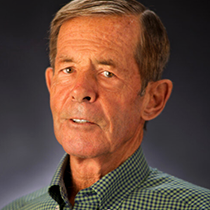Independent Retirement Account – Defined, What Are The Options?
Independent Retirement Account – Defined, What Are The Options?
There are typically two types of beneficiaries for an Independent Retirement Account (IRA). A beneficiary can be either a spouse or non-spouse, and each group has different options and benefits to receiving money from an inherited IRA.
INHERIT INDEPENDENT RETIREMENT ACCOUNT FROM SPOUSE
If you inherit an IRA from a spouse, you have the option of taking the IRA as your own and also making further contributions to the account. If you choose to take the IRA as your own, you may choose beneficiaries and extend the tax-deferred benefits of the account. Another option available from inheriting an IRA from a spouse is the opportunity to begin receiving distributions from the account. Distributions must begin on the later date of when the original owner would have turned age 70 ½ or by December 31rst of the year following the date when the owner died.
If you feel financially secure, you may choose to disclaim the inherited assets and pass on the IRA to the next designated beneficiary. Disclaiming an IRA or any assets in general is irrevocable. Prior to making this decision you should consult with a financial advisor such as Estate Street Partners who will be able to describe the tax advantages and disadvantages of this choice.
INHERIT INDEPENDENT RETIREMENT ACCOUNT FROM NON-SPOUSE
If you inherit an IRA from a non-spouse, such as a parent, relative, or other individual, your options are much more limited. A non-spouse beneficiary of an IRA can transfer the assets into an Inherited IRA Beneficiary Distribution Account or disclaim all or part of the inherited IRA.
If you transfer the inherited IRA into a Distribution Account, you can begin receiving distributions according to the one year or five year rule. If you choose to receive distributions under the one year rule, you must begin receiving distribution payments by December 31rst in the year following the year when the IRA owner died. Distribution amounts are determined by the age of the beneficiary.
Under the five year rule the beneficiary must receive the full interest of the IRA by the end of the fifth year following the year when the IRA owner died. If you choose to disclaim all or part of the inherited IRA you have only nine months following the death of the IRA owner to make this decision. It is an irrevocable decision and the disclaimed assets will pass to the next eligible beneficiary. Unlike a spouse – spouse transfer of an IRA, if you are a non-spouse beneficiary of an IRA you cannot make additional contributions to the account.
IF MORE THAN ONE QUALIFIED BENEFICIARY TO THE IRA IS DESIGNATED
If there is more than one qualified beneficiary (an actual person), the rules for distribution get more complicated. Designated beneficiaries must be determined by September 30th of the year following the year when the IRA owner died, and multiple beneficiaries have until this date to create separate Distribution accounts for their shares of the IRA.
If the beneficiaries create separate accounts then the distribution amounts will be determined individually and based on each beneficiary’s life expectancy. If the beneficiaries do not create separate account by September 30th of the year following the IRA owner’s death, the distribution amount from the inherited IRA will be determined by the life expectancy of the oldest beneficiary. This creates a disadvantage for the younger beneficiary since the distribution amount will be higher, and therefore the tax required on the distribution will also be higher.
If the IRA owner named a qualified and non-qualified beneficiary (not an actual person), there are a couple of options available for both parties. Typically, if the owner died before their required distribution date (age 70 ½) the balance of the IRA must be distributed within five years of his/her death. If the owner died after they started receiving distributions (age 70 ½) the balance of the IRA will be distributed according to the age of the beneficiary.
NON-QUALIFIED BENEFICIARY NAME IN THE DISTRIBUTION
If a non-qualified beneficiary is named the distribution rules can get complicated. For example, if a church is named as a beneficiary along with a surviving son, both beneficiaries must receive distributions according to the five year rule. However, if the church elects to receive its share of the IRA prior to September 30th of the year following the owner’s death, the son can be determined the designated beneficiary and use his life expectancy to determine future distributions.
If no beneficiary is named than the IRA will most likely pass to the estate of the deceased. In this situation the IRA loses its tax deferred benefits, is subject to taxation on all interest accrued to that point, and is open to collection from creditors. To avoid creating a tax headache for your beneficiaries it is important to consult with a financial advisor such as Estate Street Partners to designate specific beneficiaries for your IRA to prevent the savings from being lost to your estate.
—————————————————————————————————————————————————————————————————————
We hope you found this article about “Independent Retirement Account – Defined, What Are The Options?” helpful. If you have questions or need expert tax or family office advice that’s refreshingly objective (we never sell investments), please contact us or visit our Family office page or our website at www.GROCO.com. Unfortunately, we no longer give advice to other tax professionals gratis.
To receive our free newsletter, contact us here.
Subscribe our YouTube Channel for more updates.

Alan Olsen, is the Host of the American Dreams Show and the Managing Partner of GROCO.com. GROCO is a premier family office and tax advisory firm located in the San Francisco Bay area serving clients all over the world.
Alan L. Olsen, CPA, Wikipedia Bio

GROCO.com is a proud sponsor of The American Dreams Show.

The American Dreams show was the brainchild of Alan Olsen, CPA, MBA. It was originally created to fill a specific need; often inexperienced entrepreneurs lacked basic information about raising capital and how to successfully start a business.
Alan sincerely wanted to respond to the many requests from aspiring entrepreneurs asking for the information and introductions they needed. But he had to find a way to help in which his venture capital clients and friends would not mind.
The American Dreams show became the solution, first as a radio show and now with YouTube videos as well. Always respectful of interview guest’s time, he’s able to give access to individuals information and inspiration previously inaccessible to the first-time entrepreneurs who need it most.
They can listen to venture capitalists and successful business people explain first-hand, how they got to where they are, how to start a company, how to overcome challenges, how they see the future evolving, opportunities, work-life balance and so much more..
American Dreams discusses many topics from some of the world’s most successful individuals about their secrets to life’s success. Topics from guest have included:
Creating purpose in life / Building a foundation for their life / Solving problems / Finding fulfillment through philanthropy and service / Becoming self-reliant / Enhancing effective leadership / Balancing family and work…

MyPaths.com (Also sponsored by GROCO) provides free access to content and world-class entrepreneurs, influencers and thought leaders’ personal success stories. To help you find your path in life to true, sustainable success & happiness. It’s mission statement:
In an increasingly complex and difficult world, we hope to help you find your personal path in life and build a strong foundation by learning how others found success and happiness. True and sustainable success and happiness are different for each one of us but possible, often despite significant challenges.
Our mission at MyPaths.com is to provide resources and firsthand accounts of how others found their paths in life, so you can do the same.
David Checketts – The Sports Business Legend
From consultant to NBA team president and general manager to regional church leader, David Checketts has a grand story. His American dream was to pursue his love for basketball and use his life experiences to create champion teams, and champion people. Listen as he shares his story of how he was able to reach his…
Robert Zuccaro – Why this is the Worst Environment for Bond Investors
Interview Transcript of: Robert Zuccaro – Why this is the Worst Environment for Bond Investors Aaron: Hey, welcome to American dreams. I’m here today, right now with Robert SU carro and he is one of our investment market gurus out there. And I’m how are you doing today, Robert? Robert: Very well. Aaron: So w…
Scott Donnell – Helping Kids Understand Money
Financial literacy is one of the most important skills for individuals to acquire especially for children as they grow up and venture into the world. But how do parents go about teaching financial skills in a meaningful way? Scott Donnell has created an app, GravyStack, which helps parents teach their children the necessary financial skills…




